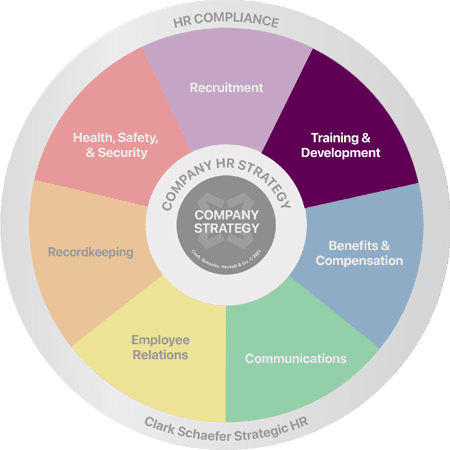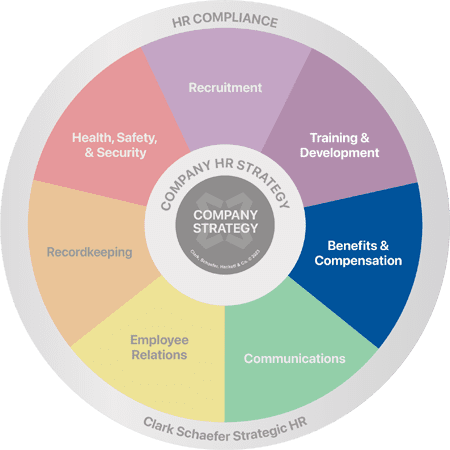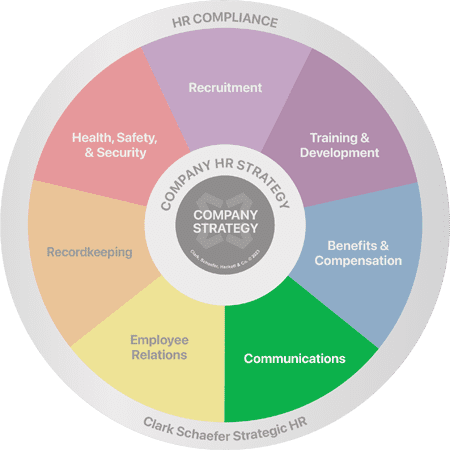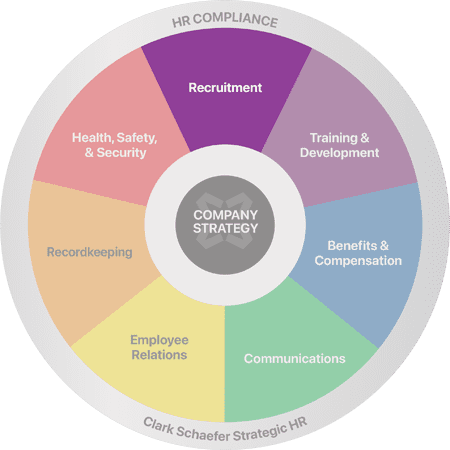How Can I Use CliftonStrengths in my Organization?
Last Updated on July 23, 2024 / Training & Development
HR Question:
I’ve heard about StrengthsFinder or CliftonStrengths. How could this help me or my organization?
HR Answer:
If you are considering using CliftonStrengths, you’re in good company! In fact, companies such as BMW, Home Depot, PepsiCo, and Wells Fargo are just a few representing the 90% of Fortune 500 companies who have used CliftonStrengths. As of 2023, 30 million people have taken the assessment.
CliftonStrengths, previously known as StrengthsFinder, is an assessment tool developed and introduced by Gallup in 2001 to help individuals and companies leverage individual talents and strengths in the workplace. The premise is that we all have a combination of innate talents unique to us. When we utilize those talents (and others utilize theirs), we can maximize our own development, achieve individual and group goals more easily, and get further in our day-to-day rather than when we use our “non-talent” areas – all while having more satisfaction overall.
Essentially, the assessment encourages you to lean into your strengths for optimal and maximum performance. The assessment findings can give you and your team more insights into why and how you do what you do.
How It Works
The CliftonStrengths tool categorizes 34 talent themes into four domains:
1. Executing
This domain describes the way you get things done. Some of these strengths include Responsibility, Achiever, and Activator. For example, if you’re well-organized, you may find that several of your strengths fall in this category.
Example: Responsibility – People who are especially talented in the Responsibility theme take psychological ownership of what they say they will do as well as anything identified as needing to be done. Every team needs someone with one of these strengths – they don’t let projects fall.
2. Influencing
Talents that fall in this domain reflect how you influence people and situations at work. Some talents in this domain may include Command, Self-Assurance, and Competition.
Example: Communication – People who are especially talented in the Communication theme generally find it easy to put their thoughts into words. These skills may show in their ability to write, present, or communicate important details and influence others through various forms of communication.
3. Relationship Building
This domain includes talents that help you understand and connect well with others. You may find strengths such as Empathy, Individualization, and Positivity in this category.
Example: Developer – People who are especially talented in the Developer theme recognize and cultivate the potential in others. Developers can often make great mentors and managers in your organization.
4. Strategic Thinking
These strengths help you see the big picture and organize thoughts and ideas for action. Some examples may include Analytical, Intellection, and Input.
Example: Futuristic – People who are especially talented in the Futuristic theme are inspired by the future and what could be. Who better to include than a Futuristic in ideation sessions or discussing new ventures?
We all have many talents that vary by type and intensity. This tool will measure both the types of strengths that you possess among the 34 talent themes, as well as the prominence of each, resulting in a personal profile where you can easily see your dominant strengths within each of the four domains.
Applications of CliftonStrengths
The internal insight CliftonStrengths can give you is impressive. But how can organizations use the assessment to strengthen their internal teams?
Team Building and Collaboration
CliftonStrengths helps teams understand the unique strengths of each member, fostering a culture of collaboration. It allows teams to assign roles that align with individual strengths, leading to increased efficiency and job satisfaction.
Knowing that a diverse set of skills is needed for teams to be successful in all ways, CliftonStrengths can also help to identify any critical gaps in your team. For example, if your team excels at coming up with awesome ideas, yet struggles to get projects to the finish line, your team may be lacking representation from the Executing domain.
Personal Development, Goal Planning, and Reviews
By focusing on strengths rather than only how to improve weaknesses, CliftonStrengths encourages greater success in personal growth and development. It provides a positive framework for performance reviews focusing on how employees can use their strengths to shine, overcome challenges, and meet goals. Managers and employees will have the proof to know where time should be focused for goal planning.
Leadership Development
For leaders, understanding their own strengths and those of their team members can lead to more effective leadership, better delegation to strengths, and fostering overall engagement.
The benefits of CliftonStrengths are numerous. Overall, it is meant to promote a positive workplace culture, increase employee engagement, and lead to higher productivity.
Only 1 in 33 million will have the same combination and order of their top 5 strengths – proof we are all uniquely valuable.
According to Gallup’s website, people who use their strengths every day are 3x more likely to report having an excellent quality of life, 6x more likely to be engaged at work, 8% more productive, and 15% less likely to quit their jobs.
However, it’s important to note a limitation. While focusing on natural talents and working in strengths can lead to more significant improvements than working in areas of no talent, it should not completely replace the need to address weaknesses, especially if those interfere with performance in the workplace.
How do you get started?
CliftonStrengths is just one of a few powerful assessments that can be an impactful tool for HR professionals, managers, and organizational leaders. Depending on your organization’s goals, you can consider different approaches with CliftonStrengths or other assessments. Check out Gallup’s options or contact Clark Schaefer Strategic HR’s training team today to learn more.
Most importantly, don’t just stop after taking an assessment. The true gains come when individuals and groups understand how to use their valuable talents and apply those strengths daily.
Special thanks to Andrea Whalen, Senior HR Business Strategist, for contributing to this edition of our HR Question of the Week!
Employee assessment tools can be used to help you assess a wide range of both soft and hard skills that are needed to be successful in your organization. To find out what assessment tools might be best for your organization, contact Clark Schaefer Strategic HR or visit our Employee Assessment Tools webpage today!










